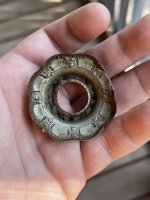nickmarch
Hero Member
- May 30, 2009
- 561
- 50
- Primary Interest:
- All Treasure Hunting
Hello All!
Have any of you tried the Two Bucket Recovery Method? The method can easily capture flour gold working in the field or on your cons at home. It captures down into the invisible to the naked eye range. It gets it all! You can easily make your own at home. It will cost you two buckets and about 50 cents. You can see a video of the method at...
Have any of you tried the Two Bucket Recovery Method? The method can easily capture flour gold working in the field or on your cons at home. It captures down into the invisible to the naked eye range. It gets it all! You can easily make your own at home. It will cost you two buckets and about 50 cents. You can see a video of the method at...
Upvote
0


 I forgot what was going on.
I forgot what was going on.

